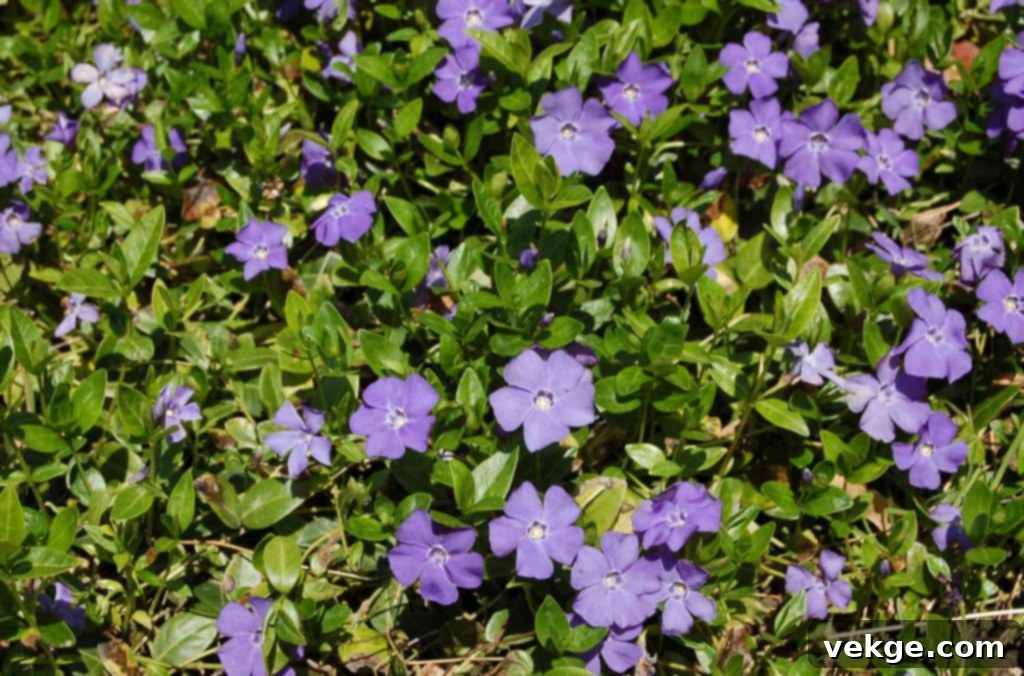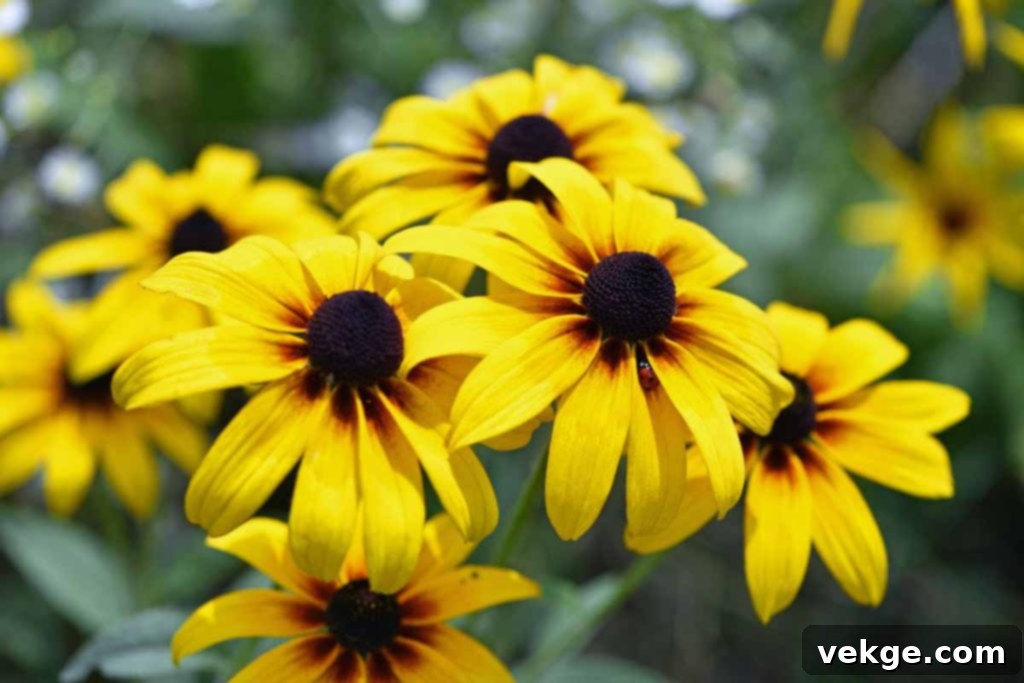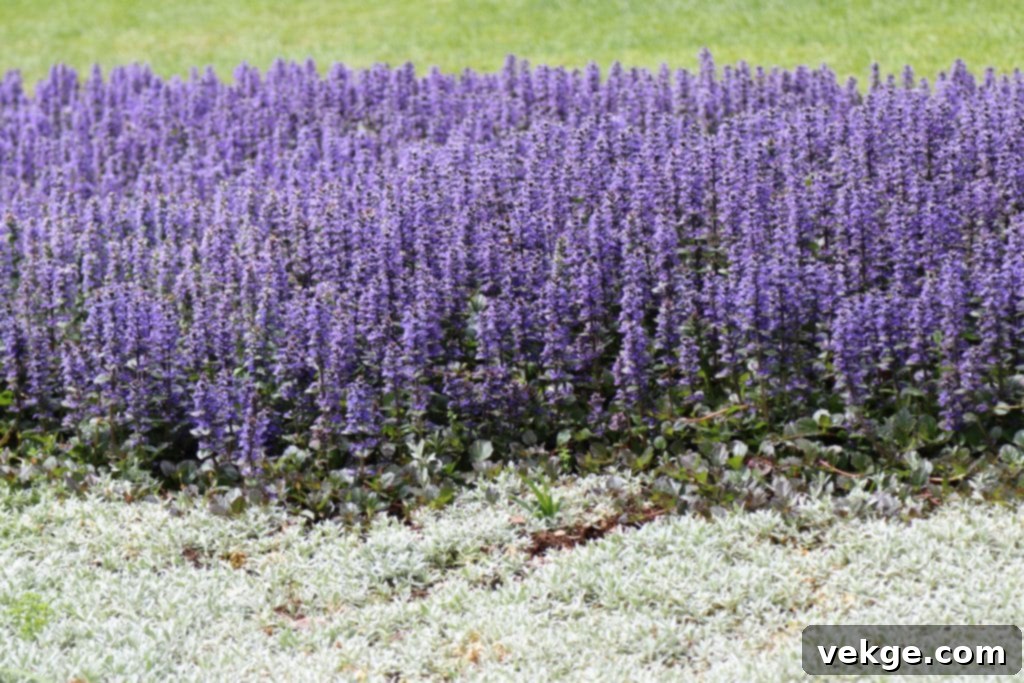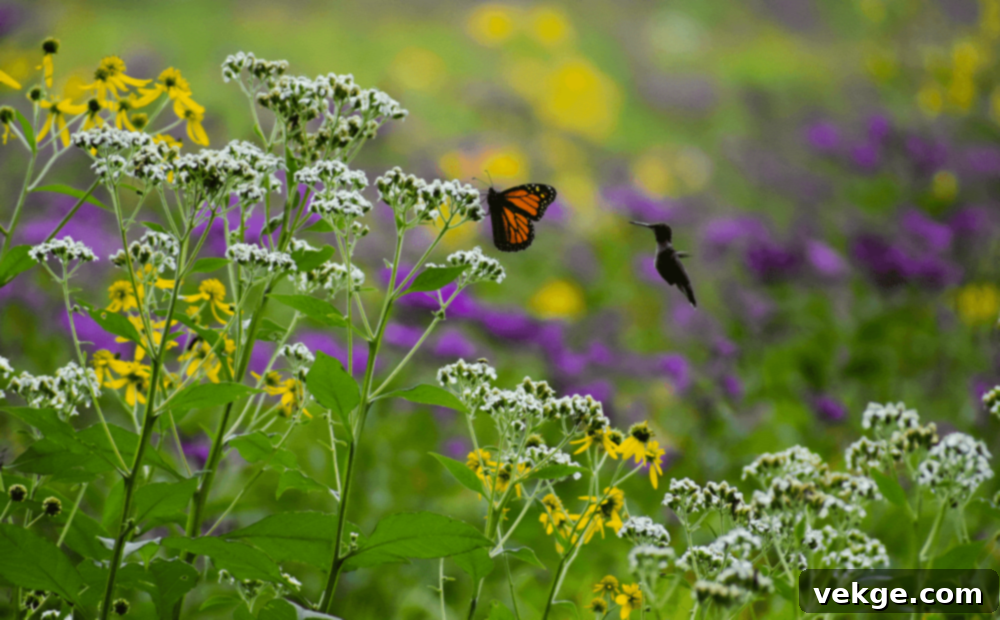Cultivating a Buzzing Paradise: Essential Plants for Your Pollinator-Friendly Garden
Imagine a garden where every bloom is a beacon, every leaf a sanctuary, and the air hums with the vital energy of life. This isn’t just a picturesque dream; it’s the reality you can create with a pollinator-friendly garden. The Society for Pollinator-Friendly Gardening champions a vision where your outdoor space transforms beyond a mere green carpet into a thriving, dynamic ecosystem. Here, you can forge a unique connection with nature, observing the intricate dance between flora and fauna, and playing a direct role in supporting our planet’s biodiversity.
Pollinators, from the industrious bee to the graceful butterfly, are nature’s silent architects, working tirelessly to ensure the propagation of flowering plants. Their multifaceted interactions with diverse plant life are not merely aesthetic; they are fundamental to ecological stability. In their quest for nectar and pollen, these crucial creatures facilitate cross-pollination, a process without which an astounding 75% of the world’s food crops would not come to fruition. Recognizing their profound impact is the first step towards creating a garden that nurtures this essential relationship.
Embarking on this rewarding journey of creating a vibrant pollinator habitat requires thoughtful plant selection. We’re about to introduce you to three remarkable botanical allies, each offering unique benefits and beauty to your garden: Vinca Minor, Rudbeckia hirta (commonly known as Black-eyed Susan), and Ajuga reptans. These “bunch plants” — beautiful in their individual characteristics yet powerful when assembled — form a spectacular tapestry of diversity. They provide not only vital sustenance for pollinators but also contribute to creating a rich and inviting living space for these invaluable creatures, ensuring the health of our surrounding world, one garden at a time.
Understanding Pollinators and Their Importance
Pollinators, encompassing a vast array of creatures from the familiar bees and butterflies to less obvious beetles, moths, and even some birds and bats, are truly the unsung heroes of our ecosystems. Their tireless efforts are critical for the reproduction of countless flowering plants, including many that produce the fruits, vegetables, and nuts we rely on daily. Without their delicate work, the majority of our favorite foods – from apples and almonds to zucchini and coffee – would either drastically diminish or disappear entirely. This highlights their immense contribution to global food security and the sustenance of human populations worldwide.
Beyond food production, pollinators are indispensable for maintaining ecological balance. They support the health of natural landscapes, aiding in seed production for wild plants, which in turn provides food and habitat for other wildlife. This ripple effect underscores their role in supporting entire ecosystems and the intricate web of life. A decline in pollinator populations can lead to a cascade of negative consequences, impacting plant diversity, animal populations, and the overall resilience of natural habitats.
Despite their critical importance to both human life and the environment, pollinators are facing an unprecedented crisis. Popular belief often underestimates their significance, but the reality is stark: these animals are severely endangered by a multitude of modern threats. Habitat loss, largely due to urbanization and monoculture farming, strips them of essential food sources and nesting sites. The widespread use of pesticides, particularly neonicotinoids, is lethally toxic to bees and other insects, disrupting their navigation, foraging, and reproductive abilities. Climate change, with its unpredictable weather patterns, also impacts flowering cycles and pollinator behavior. This is far from just a nutrition issue; it’s a profound threat to biodiversity, the stability of our entire ecosystems, and ultimately, the sustainability of life on Earth.
Creating pollinator-friendly spaces in our gardens is not merely a hobby; it’s an act of environmental stewardship. By understanding the challenges these vital creatures face, we can make informed choices to support their survival, ensuring a future where our gardens, and indeed our world, continue to buzz with life.
Vinca Minor: The Evergreen Ground Cover

Step into the enchanting world of Vinca Minor, a perennial groundcover often referred to as ‘Periwinkle’. This plant’s charm is undeniable, with its glossy, dark green foliage that remains vibrant throughout the year, even under snow, providing a continuous carpet of life. In early spring, this verdant tapestry is adorned with a profusion of delicate, star-shaped violet-blue flowers, creating a breathtaking display that catches the eye and signals the arrival of warmer weather.
Vinca Minor plays a crucial role in the ecosystem, particularly as an early-season nectar source for emerging pollinators. Bees, having overwintered, eagerly seek out these first blooms to replenish their energy stores. Its dense growth habit also offers valuable shelter and nesting opportunities for beneficial insects, contributing to the overall health and biodiversity of your garden. As a widespread and resplendent green layer, Vinca Minor has the remarkable ability to transform challenging landscapes, such as shady slopes or areas under large trees where grass struggles, into gorgeous, low-maintenance green refuges that are full of life.
One of Vinca Minor’s most appealing attributes is its exceptional adaptability. It performs remarkably well under a wide range of environmental conditions, making it a reliable choice for almost any garden setting. From the deepest, shadiest niches where few other plants thrive, to moderately sunny spots, Vinca Minor proves to be a robust and resilient companion. It tolerates various soil types, though it prefers well-drained, organically rich soil. Once established, it is also quite drought-tolerant, further cementing its reputation as a low-maintenance superstar.
Incorporating Vinca Minor into your garden design offers numerous benefits. Its trailing habit makes it an excellent choice for erosion control on slopes, preventing soil runoff. It effectively suppresses weeds by forming a thick, impenetrable mat, reducing the need for constant weeding. For birds and butterflies alike, while attracting them with its delicious nectars, it becomes a gorgeous and long-time appreciated reaper of nature’s harmony through symbiosis. Its elegant blooms and evergreen foliage provide continuous visual interest, enhancing the beauty and ecological value of your pollinator garden throughout the year. The serene blue of its flowers complements a variety of garden palettes, creating a peaceful and inviting atmosphere that beckons both humans and nature’s winged wonders.
Black-eyed Susan: The Cheerful Summer Bloomer

The very sight of a Black-eyed Susan (Rudbeckia hirta) in full bloom is enough to brighten any day, instantly conjuring vivid summer memories and filling the heart with happiness and contentment. Its iconic, sunshine-yellow petals radiating outwards from a striking, dark brown or black central cone are a quintessential symbol of the warm season. This native North American wildflower is not just a treat for the eyes; it’s a powerhouse for pollinators, embodying the vibrant spirit of summer.
Black-eyed Susans are truly all-stars of the sunny garden scene, particularly thriving in well-drained soil and under abundant sunlight. These resilient plants are remarkably easy to grow and maintain, making them an excellent choice for both novice and experienced gardeners. Their cheerful blooms typically grace the garden from early summer all the way through to the first frosts of autumn, providing a continuous and much-needed nectar source during a period when many other plants have finished flowering. This extended bloom time is especially critical for late-season pollinators preparing for winter or migration.
The rich nectar and pollen offered by Black-eyed Susans are irresistible to a wide array of pollinators. Bees, including native bees and honeybees, flock to their large, accessible flower heads. Butterflies, such as monarchs, swallowtails, and painted ladies, are drawn to their bright colors and readily available sustenance. As the flowers fade and go to seed, the central cones become a valuable food source for various bird species, particularly finches, which eagerly feast on the seeds during the fall and winter months. This multi-season appeal makes Rudbeckia hirta a cornerstone of any truly pollinator-friendly habitat.
Furthermore, Black-eyed Susans are highly versatile in garden design. They are perfect for adding a burst of color to borders, cottage gardens, and rockeries. Their naturalized appearance makes them ideal for wildflower meadows and informal plantings, where they can spread freely and create breathtaking displays. They also make excellent cut flowers, bringing the joyful essence of a summer garden indoors. Whether planted in mass for a dramatic impact or interspersed with other perennials, these beautiful blooms add that extra layer of flair wherever they are used, thus contributing to the beautiful landscape that we all experience and appreciate. Find out more about the Black-eyed Susan plant and where to acquire it for your garden.
Ajuga Reptans: The Low-Maintenance Beauty

Ajuga reptans, commonly known as Bugleweed, is a true gem for any garden seeking low-maintenance beauty with significant ecological benefits. This versatile groundcover forms a dense, mat-like foliage that not only adds visual interest but also serves practical purposes. Its leaves come in an array of captivating hues, from vibrant green to deep burgundy, bronze, and even variegated patterns, providing year-round color. In spring, this lush carpet is adorned with striking spikes of small, tubular flowers, typically in shades of brilliant blue, purple, or white, creating a natural and lovely display that truly elevates the garden’s aesthetic.
What makes Ajuga particularly attractive to pollinators is its early spring bloom time. These robust flower spikes emerge when many other plants are just beginning to awaken, offering a crucial and abundant source of nectar and pollen for early-emerging bees and other beneficial insects. Its dense growth habit also provides excellent ground cover, offering shelter for small garden creatures and helping to keep the soil cool and moist. The ease with which bees can access its small, trumpet-shaped flowers makes it a popular stop for various species.
This particular plant is celebrated for its incredible adaptability, seamlessly blending into various garden habitats. It thrives in a wide range of soil conditions, from average to rich, and is remarkably tolerant of different light exposures, excelling in partial to full shade, which makes it an ideal choice for challenging under-tree plantings or north-facing beds. While it can tolerate some sun, it generally prefers cooler, shadier spots where its foliage colors intensify. This versatility makes it an invaluable asset for filling bare spots and creating a cohesive, living tapestry across diverse garden environments.
Beyond its pollinator appeal and aesthetic charm, Ajuga reptans offers significant practical advantages for garden management. It is an outstanding choice for erosion control, particularly on slopes or uneven terrain, where its vigorous root system helps to stabilize the soil. Its dense mat of foliage effectively suppresses weeds, drastically reducing the need for manual weeding and chemical herbicides. This makes it a highly sustainable and eco-friendly option for groundcover. Ajuga is a resilient element, making a garden beautiful, resourceful, and full of life, contributing to a healthier, more balanced outdoor space for both nature and the gardener.
Cultivating a Pollinator-Friendly Habitat

Creating a thriving pollinator-friendly habitat is a rewarding endeavor that extends far beyond simply planting a few flowers. It involves thoughtful design and ongoing care that considers the complete lifecycle needs of these essential creatures. By strategically implementing plants like Vinca Minor, Black-eyed Susan, and Ajuga Reptans, you’re building a foundation, but true success lies in fostering rich biodiversity throughout your garden ecosystem.
One of the most crucial aspects is plant diversity. Mixing different types, shapes, and colors of plants ensures a wider range of pollinators are attracted. More importantly, selecting plants that bloom at various times of the year—from early spring with Ajuga and Vinca, through summer with Black-eyed Susan, and into late fall—guarantees a continuous supply of nectar and pollen. Consider integrating native plants specific to your region, as these are often best adapted to local soil and climate conditions and provide the most familiar and beneficial resources for native pollinators. A layered approach, including groundcovers, perennials, shrubs, and even small trees, offers diverse habitats and food sources.
Beyond flowers, a healthy pollinator habitat needs several key elements:
- Water Source: Provide a shallow dish with pebbles or a bird bath, ensuring pollinators have a safe place to drink without drowning.
- Shelter and Nesting Sites: Leave some patches of bare soil for ground-nesting bees. Include brush piles, log sections, or a “bee hotel” for cavity-nesting bees. Allow some areas of your garden to be a little messy, with uncut stems from fall, providing overwintering sites.
- Avoid Pesticides: This is paramount. Even “organic” pesticides can be harmful to beneficial insects. Embrace integrated pest management strategies, focusing on prevention, manual removal, and encouraging natural predators. A healthy, diverse garden is often its own best defense against pests.
- Soil Health: Nurture your soil with compost and organic matter. Healthy soil leads to healthy plants, which in turn produce more abundant and nutrient-rich nectar and pollen.
Implementing humane garden green tactics, such as creating a diverse habitat for pollinator populations and combining flowers strategically, significantly enhances the beauty and ecological value of your garden. This approach not only enriches the organic and ecological nature of the plants themselves but also attracts a vibrant array of life, fostering a diverse and continuous ecosystem right in your backyard. Your efforts contribute to a larger network of habitats, playing a vital role in supporting pollinator populations and promoting environmental health on a broader scale.
Conclusion
The journey of transforming your garden into a haven for pollinators is one of the most impactful steps you can take for local biodiversity and global ecological health. By carefully selecting plants like the versatile Vinca Minor, the cheerful Black-eyed Susan, and the resilient Ajuga Reptans, you are not just planting flowers; you are erecting a vital bee haven. This act of conscious gardening directly enhances diversity within the community of living organisms and contributes significantly to the preservation of ecosystems.
Through these simple yet profound choices, your garden becomes a vibrant testament to the power of nature and our ability to coexist harmoniously with it. Converting your habitat to a pollinator-friendly one with these exceptional flowers—Vinca Minor, Black-eyed Susan, and Ajuga Reptans—enriches biodiversity, sustains our precious ecosystems, and deepens our inherent relationship with the natural world. Let your garden be a buzzing, beautiful example of how individual action can foster a healthier, more vibrant planet for all.
